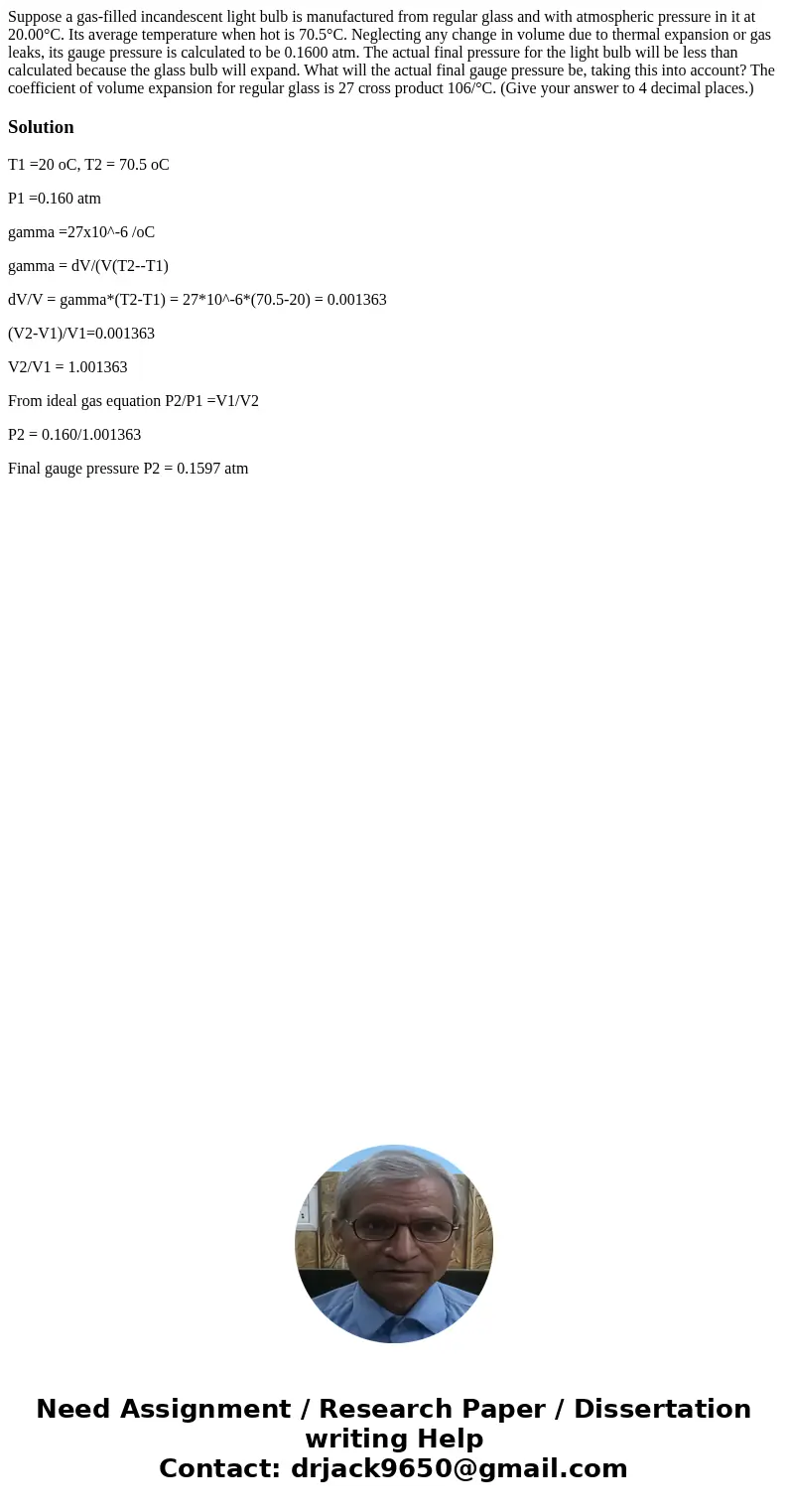Suppose a gasfilled incandescent light bulb is manufactured
Suppose a gas-filled incandescent light bulb is manufactured from regular glass and with atmospheric pressure in it at 20.00°C. Its average temperature when hot is 70.5°C. Neglecting any change in volume due to thermal expansion or gas leaks, its gauge pressure is calculated to be 0.1600 atm. The actual final pressure for the light bulb will be less than calculated because the glass bulb will expand. What will the actual final gauge pressure be, taking this into account? The coefficient of volume expansion for regular glass is 27 cross product 106/°C. (Give your answer to 4 decimal places.)
Solution
T1 =20 oC, T2 = 70.5 oC
P1 =0.160 atm
gamma =27x10^-6 /oC
gamma = dV/(V(T2--T1)
dV/V = gamma*(T2-T1) = 27*10^-6*(70.5-20) = 0.001363
(V2-V1)/V1=0.001363
V2/V1 = 1.001363
From ideal gas equation P2/P1 =V1/V2
P2 = 0.160/1.001363
Final gauge pressure P2 = 0.1597 atm

 Homework Sourse
Homework Sourse